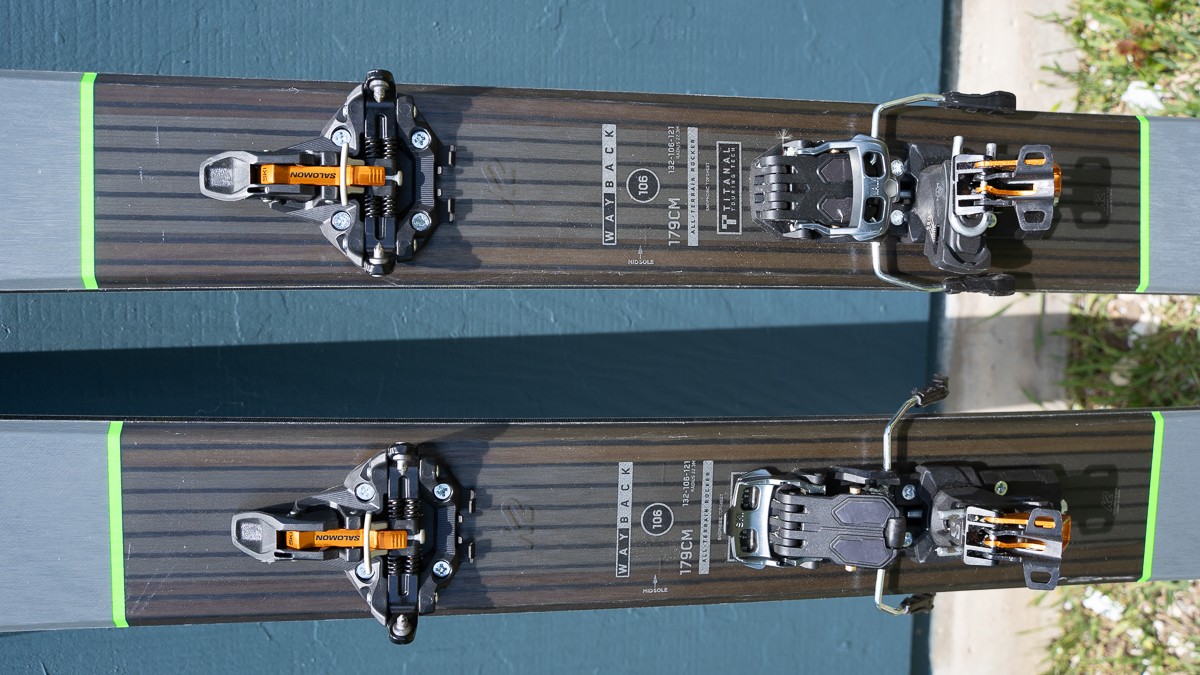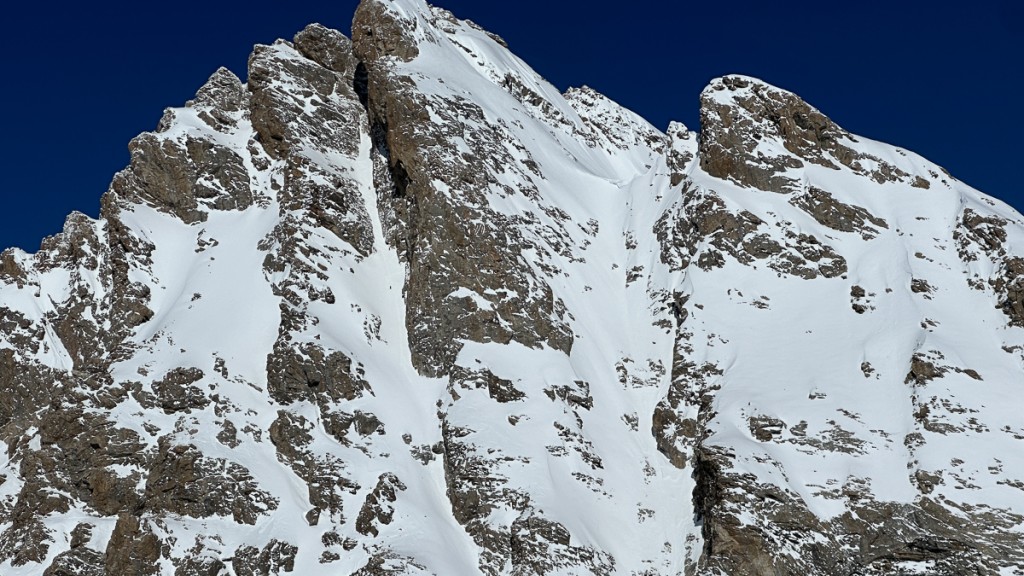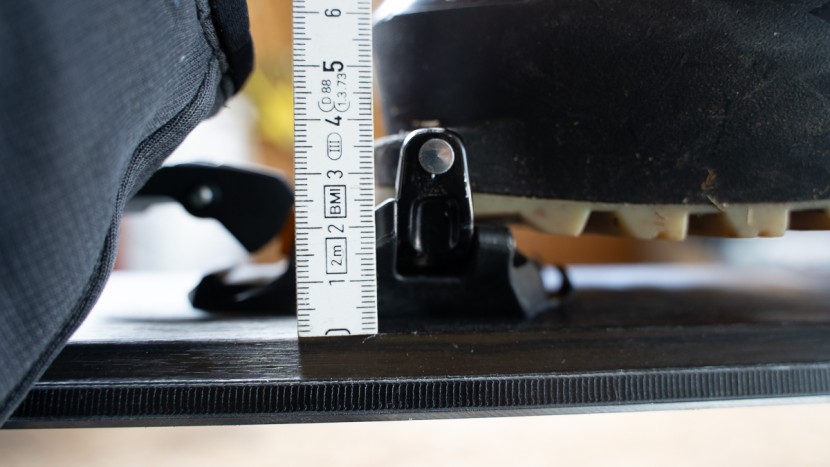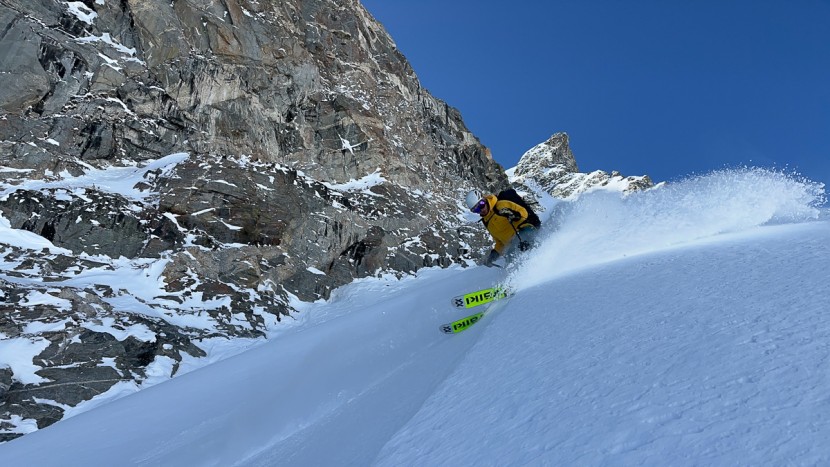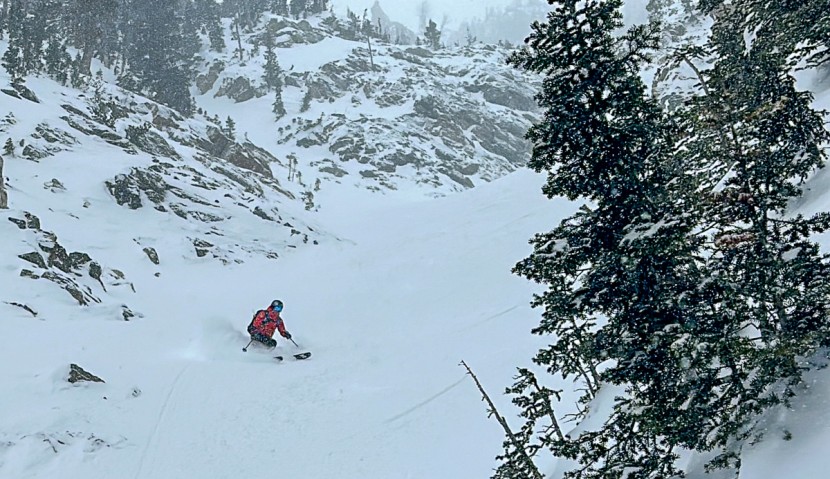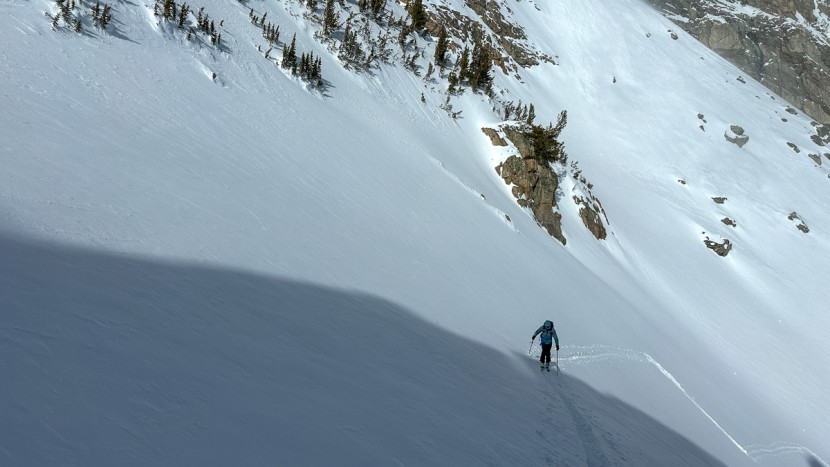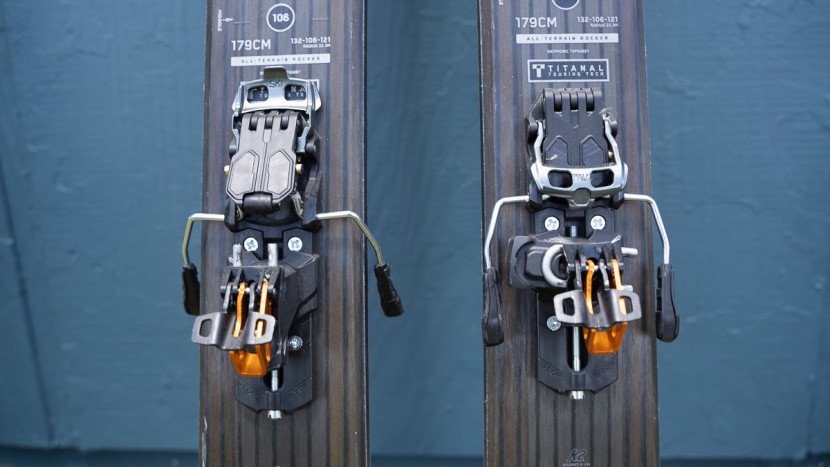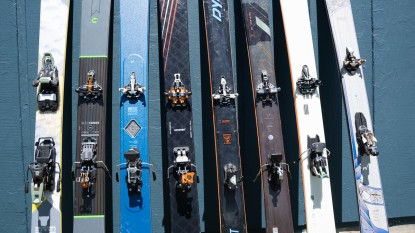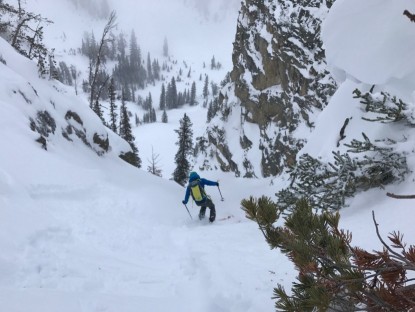
Our Verdict
Our Analysis and Test Results
Salomon MTN vs. Atomic Backland
These two binding platforms are exactly the same. Salomon and Atomic are owned by the same company, Amer Sports, and as a result, the brands share many of the same designs. (Armada is also an Amer brand, and the Armada Tracer bindings are also the same.)
There are important differences, however, between “Summit” qualified bindings and the “Tour” qualified bindings. The Salomon MTN Summit 12 is the same as the Atomic Backland Summit 12, but they are different than the Atomic Backland Tour. Although both Summit and Tour bindings feature similarly designed toe and heel pieces, they incorporate different materials, heel elasticity, and release value adjustments. All of these bindings are offered with optional brakes (denoted by "BR").Weight
We think it's weird that manufacturers omit screws when they cite the weight of bindings. How else are you supposed to attach them to your skis?! As we tested them – the BR version of this binding includes brakes and screws – one MTN Summit 12 weighs 422 grams, which is just under one pound (0.93 pounds). You can choose to strip off the brake, and you get a binding that weighs 310 grams.
It's pretty typical these days to find a binding with a brake and modern release characteristics to tip the scales around 400 grams. There are slightly lighter bindings out there with brakes, but those brakes are more fickle than the ones on the MTN Summit 12.
If you choose to go even lighter, you will quickly lose the convenience of brakes and any other modern attributes. We tend to classify “modern” touring bindings based on their release and retention characteristics. Essentially, this comes down to adjustable release values plus some degree of “heel elasticity” – that is, a heel piece with lateral release action that mimics an alpine binding. The MTN Summit 12 strikes a sweet spot for weight while maintaining the full functionality of a modern tech binding.
Downhill Performance
To assess the downhill performance of AT bindings, we first and most importantly, confirm that the binding holds a skier's boot securely under “normal” ski conditions. The good news is that all modern touring bindings on the market do this pretty reliably (as long as they are well-adjusted and in good working order). You may hear damning reports of “pre-release” events with touring bindings; in our experience and based on our observations, this is mainly a function of user error. From this angle, the MTN Summit 12 performs great going downhill.
Other considerations are a distant second to the primary criteria above. Although they are optional, we chose to test the MTN Summit 12 with brakes. Our team agrees that bindings with brakes improve downhill performance to an extent – even if it's not directly related, having brakes on your skis means you don't have to attach them to your boot with a leash. This binding offers an adjustable release with “heel elasticity,” though the adjustment is less sophisticated than other bindings we tested and certainly less so than resort bindings (these have no DIN/ISO certification, for instance).
The greatest benefit of an elastic heel is that the binding can be mounted without a gap between the boot and binding, which generally makes adjustments easier. Unfortunately, there is still a heel gap with this binding (measured at 4 mm). It's not the end of the world, especially for folks who aren't constantly adjusting bindings. However, the lack of overall adjustability relative to other, otherwise similar bindings in our lineup dings the MTN Summit 12 a bit.
Touring Performance
Touring performance is pretty simple to assess and something that most modern tech bindings do very well. We evaluate bindings based on the range of motion in the toe pivot, the selection and size of heel lifters, and how efficiently they transition. The MTN Summit 12 offers all the range of motion that you need – in fact, fewer and fewer bindings on the market are giving us any issues in this way, which is a huge improvement overall.
These bindings have three heel lifter levels, all of which can easily be flipped with a ski pole. Some of our testers complained a bit about the lowest, “flat-on-ski” mode, which isn't flat if you choose to mount the MTN Summit 12 with brakes. The brake retention device stacked on top of the AFD (anti-friction device) becomes an immovable heel riser. This is less of an issue if you have a pair of boots with a good range of motion and don't regularly slog over miles of flat terrain. However, if you often travel long, flat approaches or have stiff touring boots, you will likely notice the elevated heel in “flat” mode.
Ease of Use
The low-profile construction of the MTN Summit 12 tends to collect a fairly minimal amount of ice. Even though their design is relatively more complex than the super-simple tech bindings in our review, they are better in this regard than many other options with brakes. When they do ice up – which generally happens around the brakes and brake stowing lever – you can lightly bash it away without compromising these parts of the binding.
The brake and brake stow system is especially reliable for a binding of this weight. We have logged hundreds of thousands of vertical feet on the MTN system – on the MTN Summit 12 and older models with the same design – and have experienced remarkably few issues over the years. Brakes on lightweight bindings tend to get a bad rap, mostly for good reasons, in our opinion. These brakes, however, are an exception to that rule. They work incredibly well and are exceptionally reliable.
Construction Quality
We have skied this particular pair of MTN Summit 12 for one very thorough test season, though we have used older versions for much longer. We continue to ski and test this binding, but we like what we have experienced through the years. The construction is simple, which means it can be robust without negatively impacting weight. Release and length adjustment is pretty average, with 30 mm of length adjustment and numerical lateral and vertical release value adjustment.
Our only complaint is with the U-spring in the heel piece, which is a design we only expect to see in much lighter-weight bindings. The heel pins of most bindings in this weight class are independent, freely spinning bars, and the action required for entry and release comes from a standalone spring. Lighter-weight bindings rely on a much older design where a single bar of spring metal, bent into a “U” shape, provides the action for lateral release. This design is simple, lightweight, and timeless. However, it means that the same pieces always take the pressure of routine use, while independent heel pins help spread out wear and tear. As a result, we expect that frequent backcountry skiers may experience accelerated wear of the heel pins on the MTN Summit 12.
Should You Buy the Salomon MTN Summit 12 BR?
Despite our criticism of the U-spring in the heel piece, this relatively minor complaint is more than outweighed by the solid, reliable, lightweight performance of the MTN Summit 12. We especially like the brake design and suggest folks purchase and use this binding with brakes. There is, of course, an associated weight penalty, but our testers agree that it's a fair tradeoff (which is not always the norm with our weight-conscious team!) This is an excellent choice of binding for any well-rounded backcountry skier.
What Other AT Bindings Should You Consider?
Since they are so similar, we suggest you compare these directly against the Atomic Backland Tour. The toe piece, brakes, and heel lifters are essentially the same. The main difference is that the Summit has more sophisticated release features, while the Tour is slightly lighter weight. You should also closely compare these bindings with the ATK Raider 13 Evo. The brakes on the ATK bindings take a bit more fiddling during transitions, but likely longer-lasting heel pins. However, you really can't go wrong with any of these bindings.
| Awards | The Other Best Binding |
|---|---|
| Price | $630 List Check Price at Backcountry |
Overall Score  |
|
| Star Rating | |
| Bottom Line | With just the right balance of weight, performance and features, these are excellent bindings for all-around ski touring or ski mountaineering |
| Pros | Fully functional, reasonably light, great brake system |
| Cons | Never truly flat with brakes, concerns about U-spring longevity |
| Rating Categories | Salomon MTN Summit 1... |
| Weight (35%) | |
| Downhill Performance (25%) | |
| Touring Performance (20%) | |
| Ease of Use (15%) | |
| Construction Quality (5%) | |
| Specifications | Salomon MTN Summit 1... |
| Weight of 1 binding and screws, lightest possible configuration (in grams) | 310 |
| Release Value Range | 6 to 12 |
| Brakes? | Optional |
| Brake Width Options | 80, 90, 100, 110 mm |
| Weight of 2 bindings, common setup (pounds) | 1.86 |
| Weight of 2 bindings (in grams). Multiple options are noted where we have tested multiple options. | 843 (600 without brakes) |
| Stack height: average of toe and heel pin height (in mm) | 38 |
| Toe/heel delta: difference in height between heel pins and toe pins (in mm) | 8 |
| Meets ISO/DIN Standard? | No |
| Ski Crampon compatible? | Yes. "Standard" style. Not all crampons will be cross-compatible |


